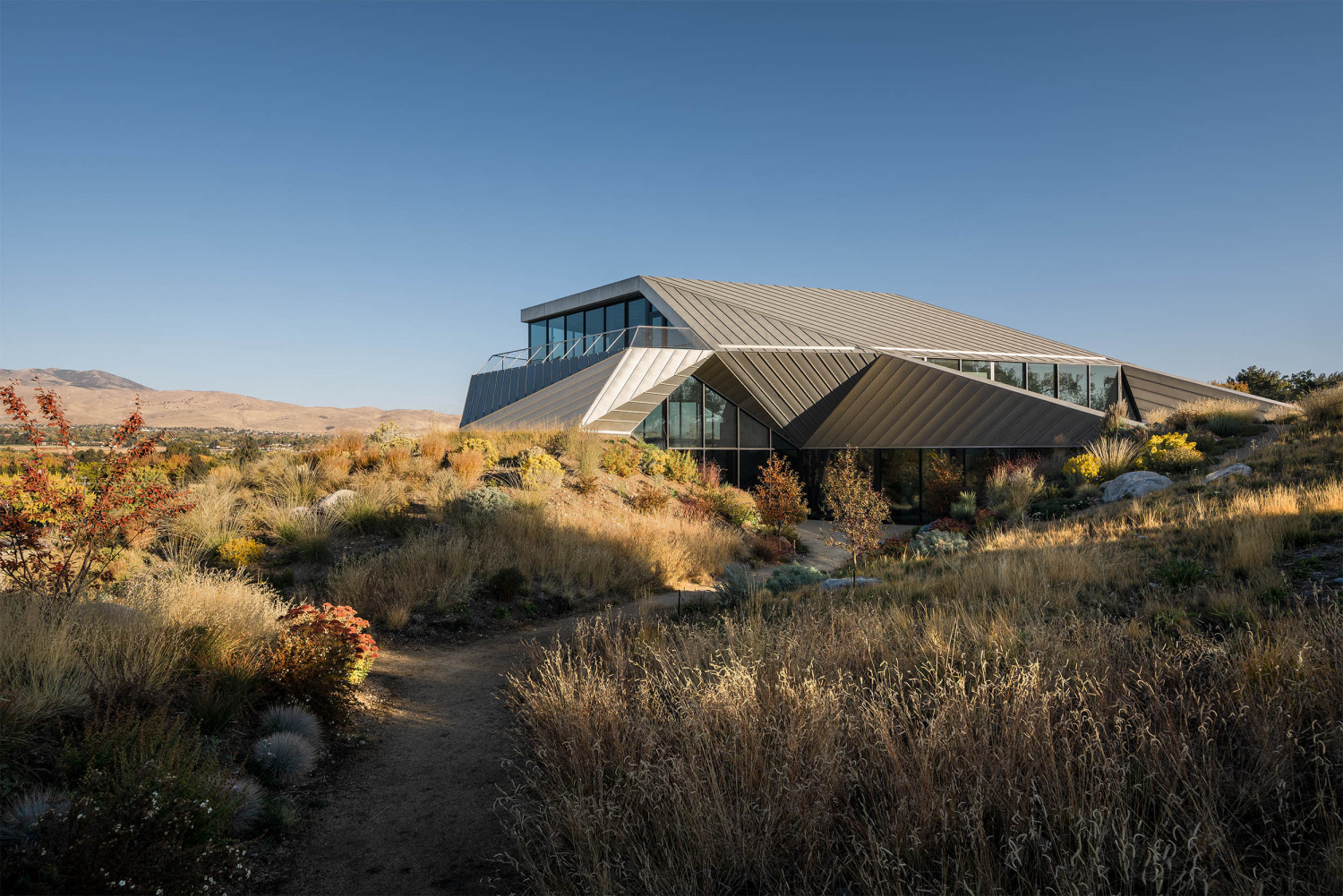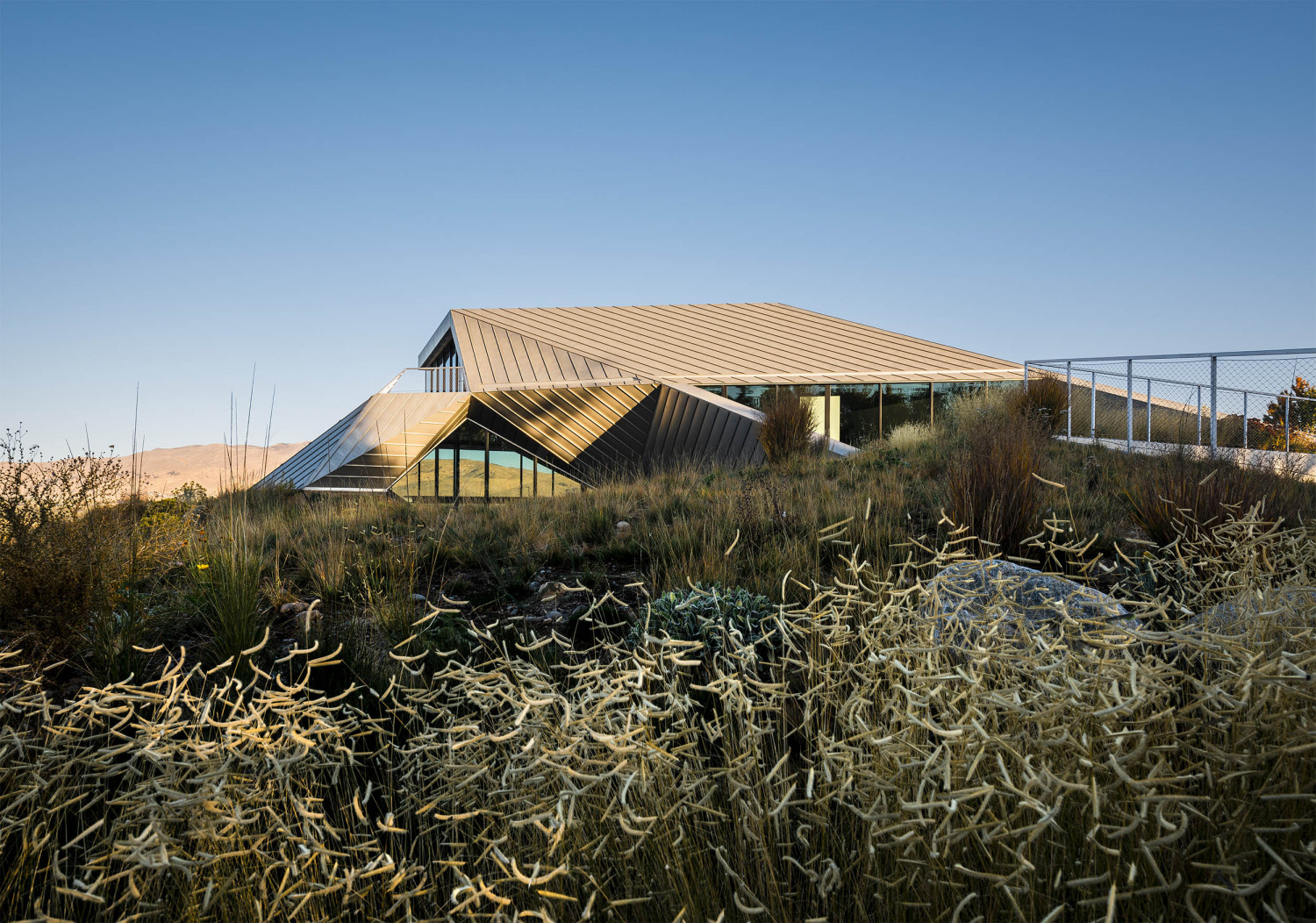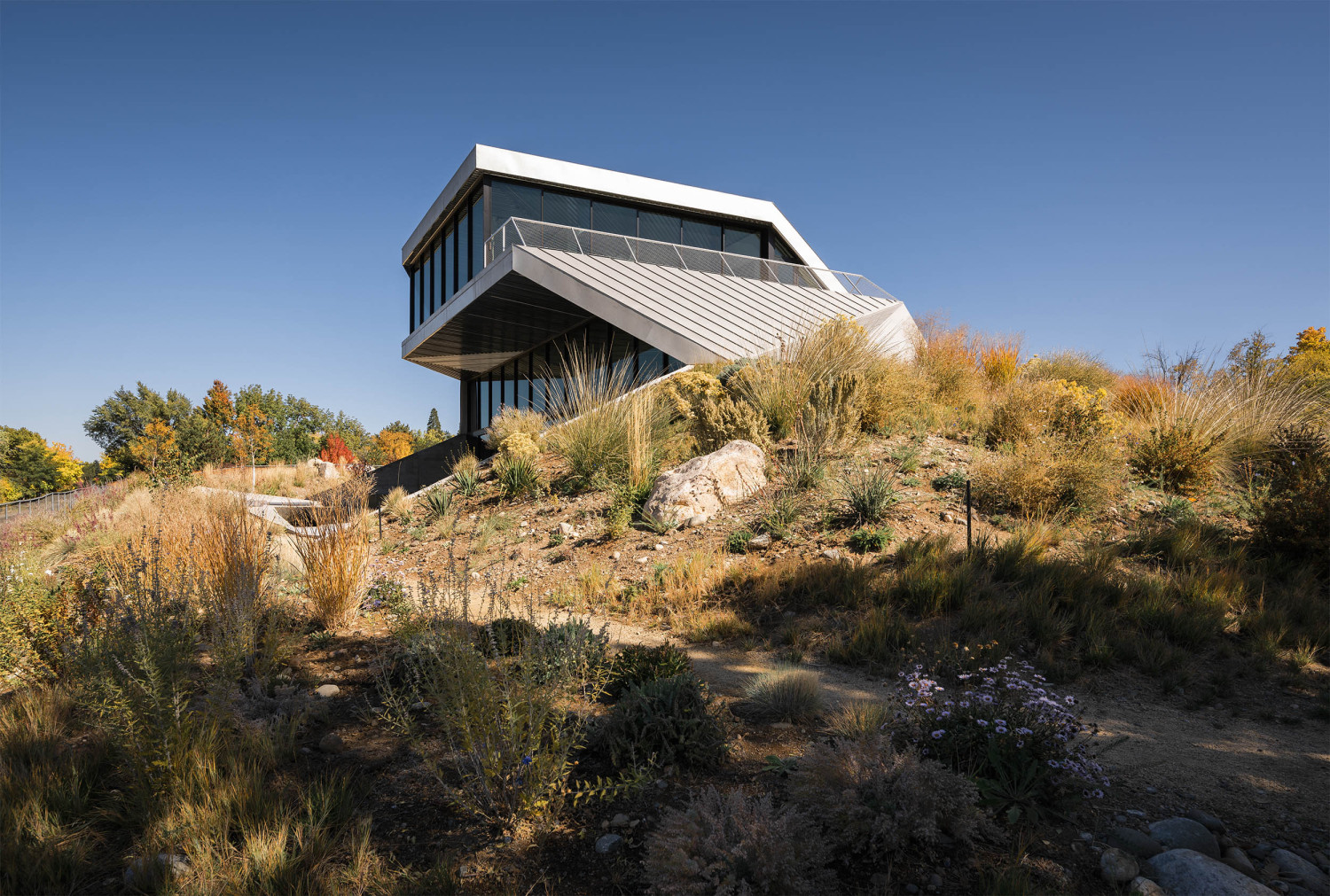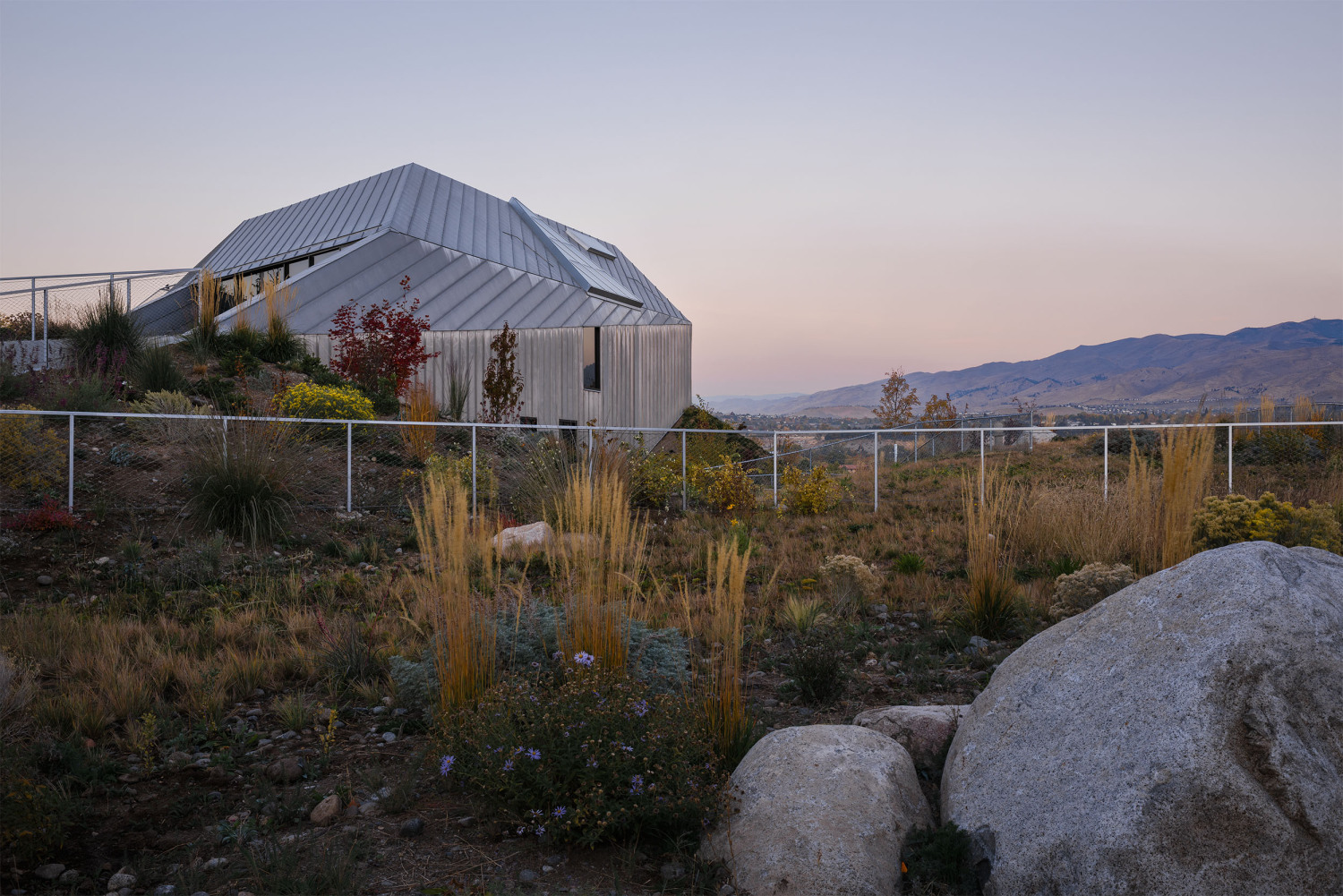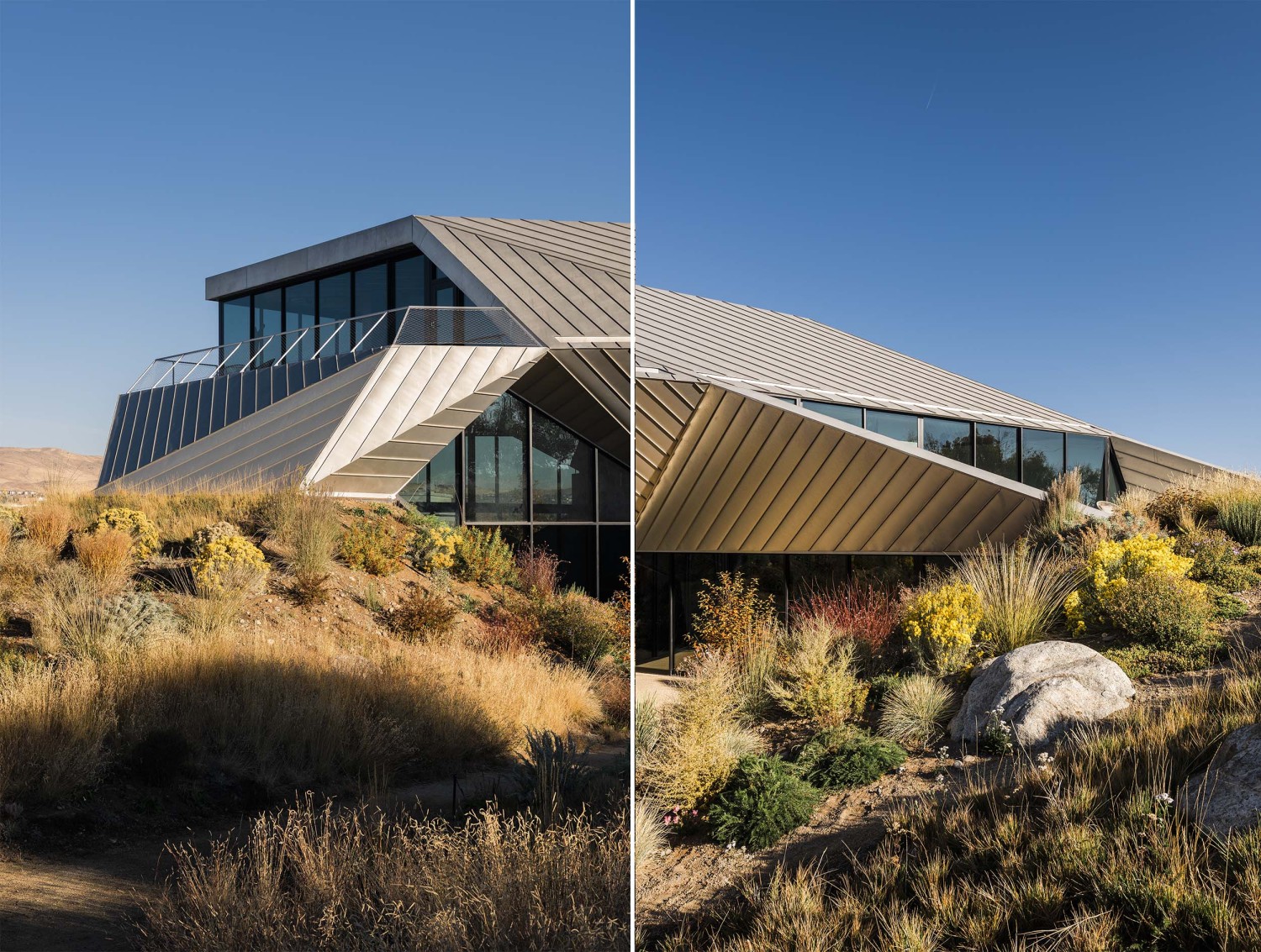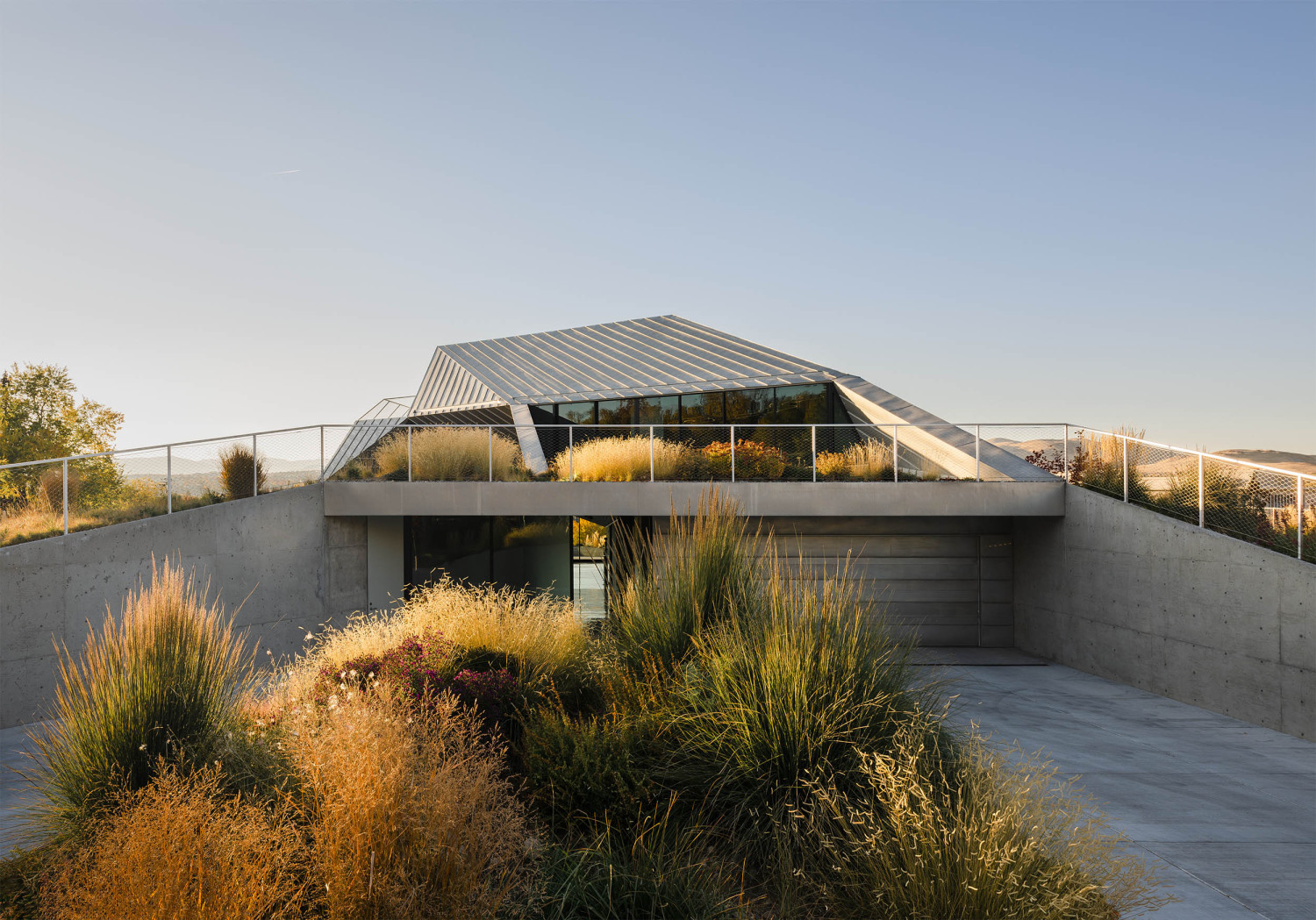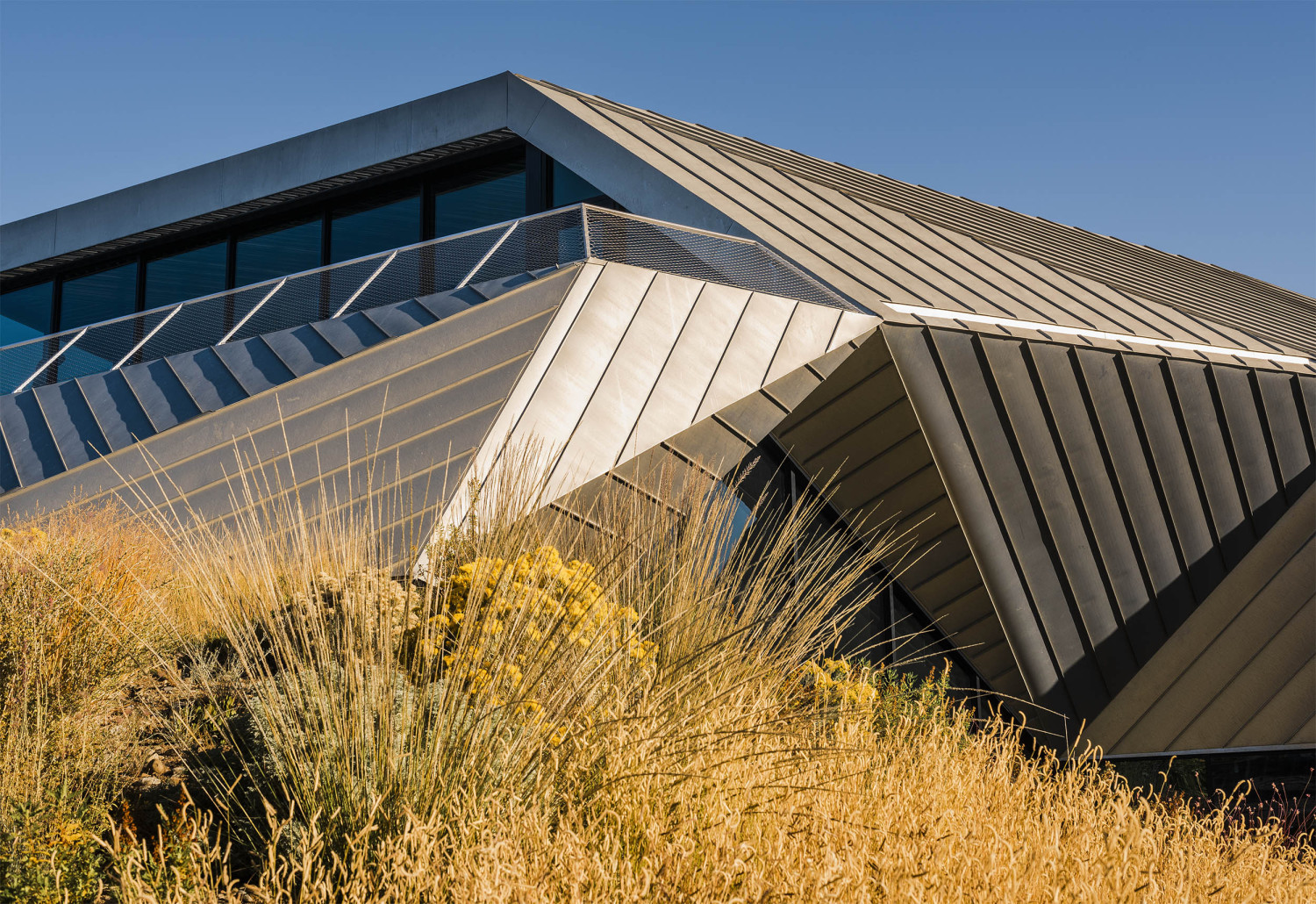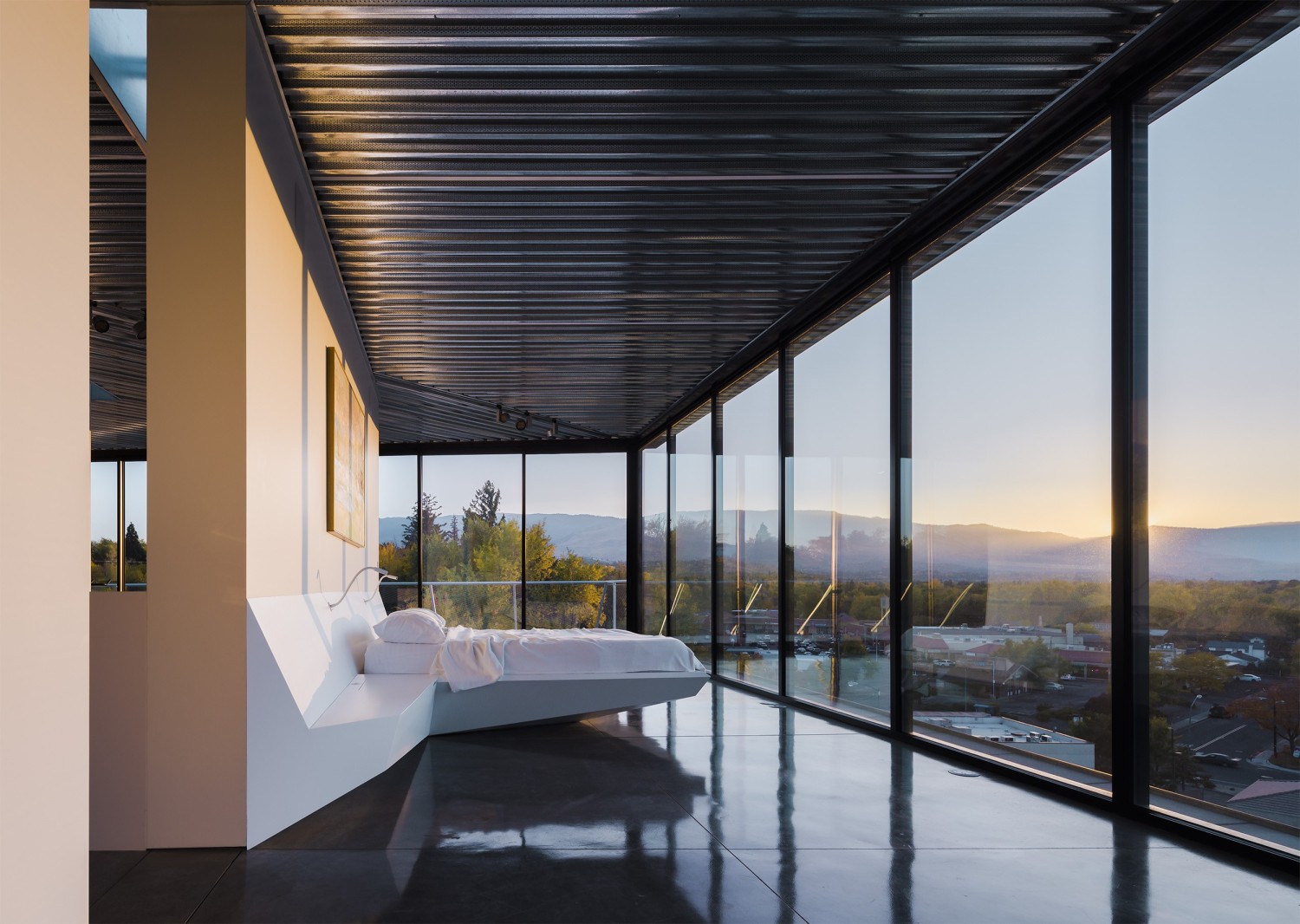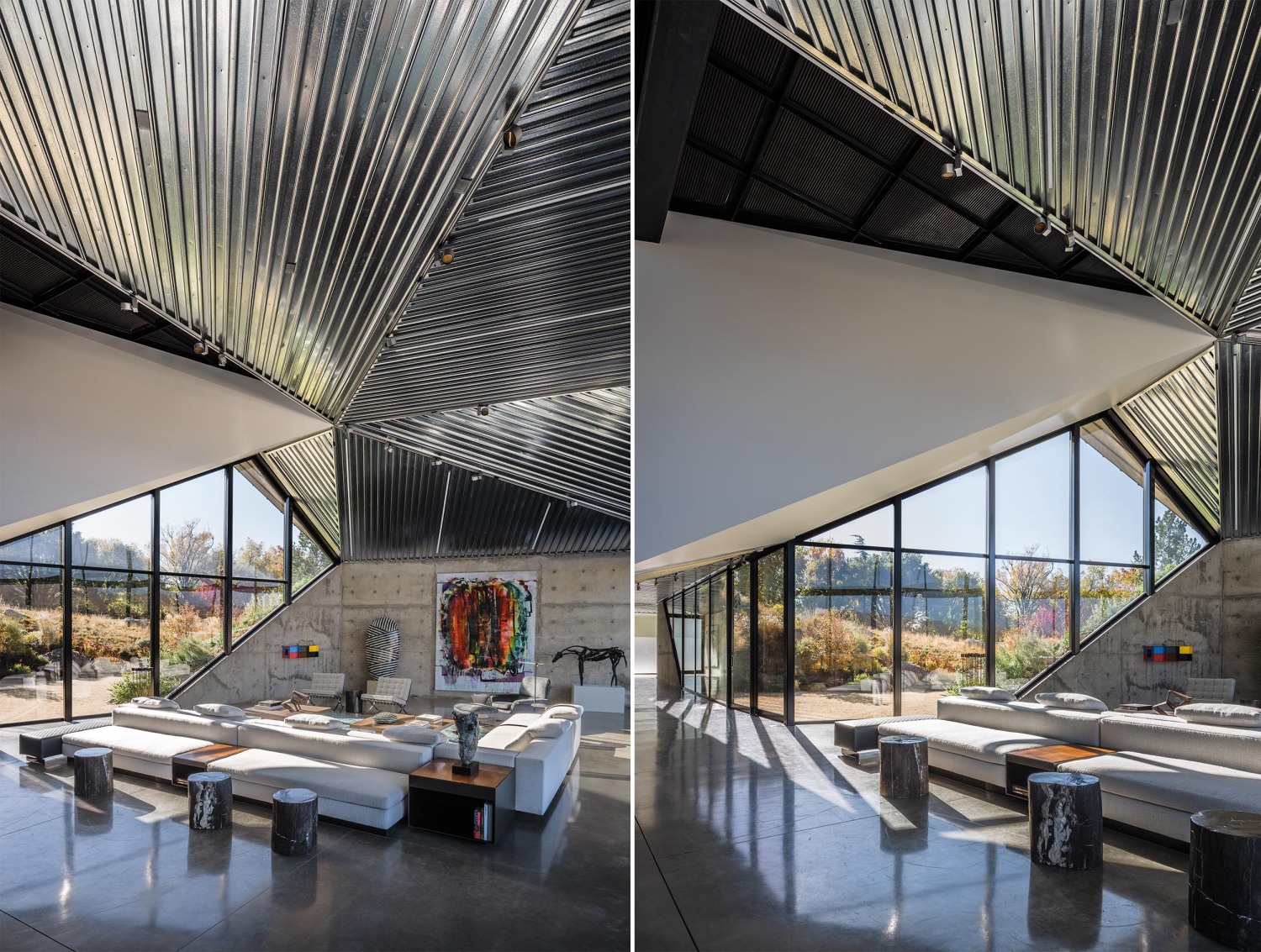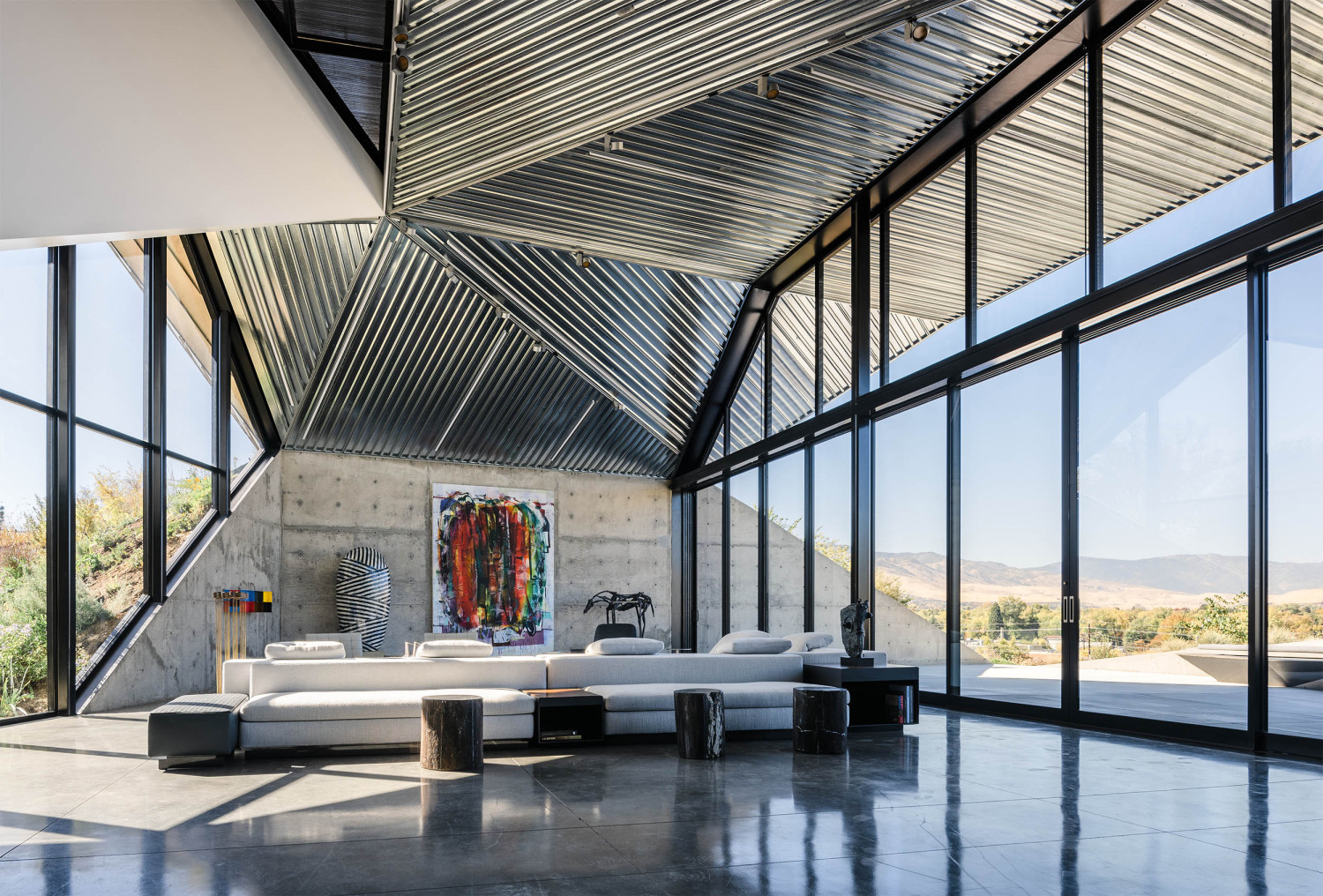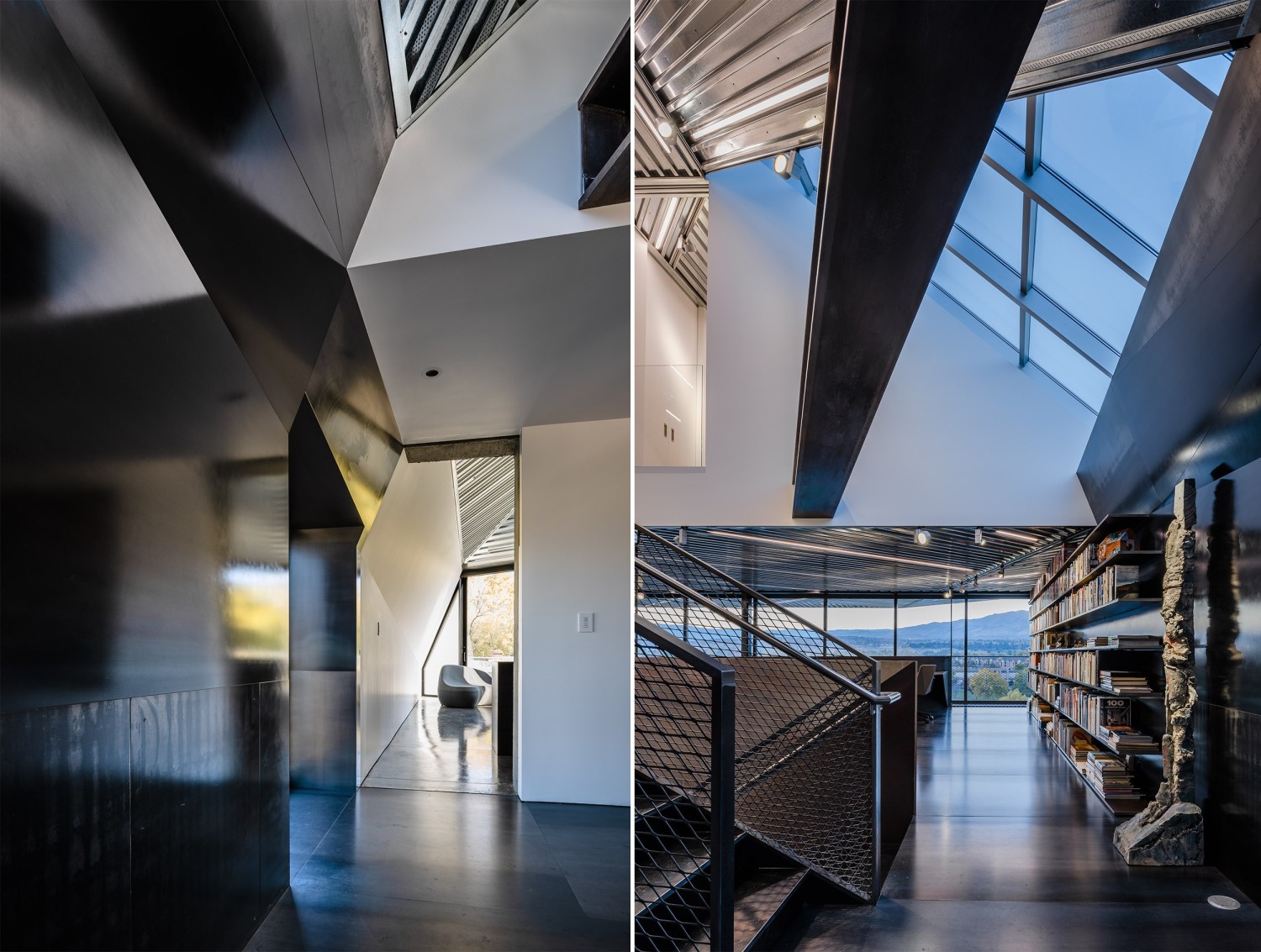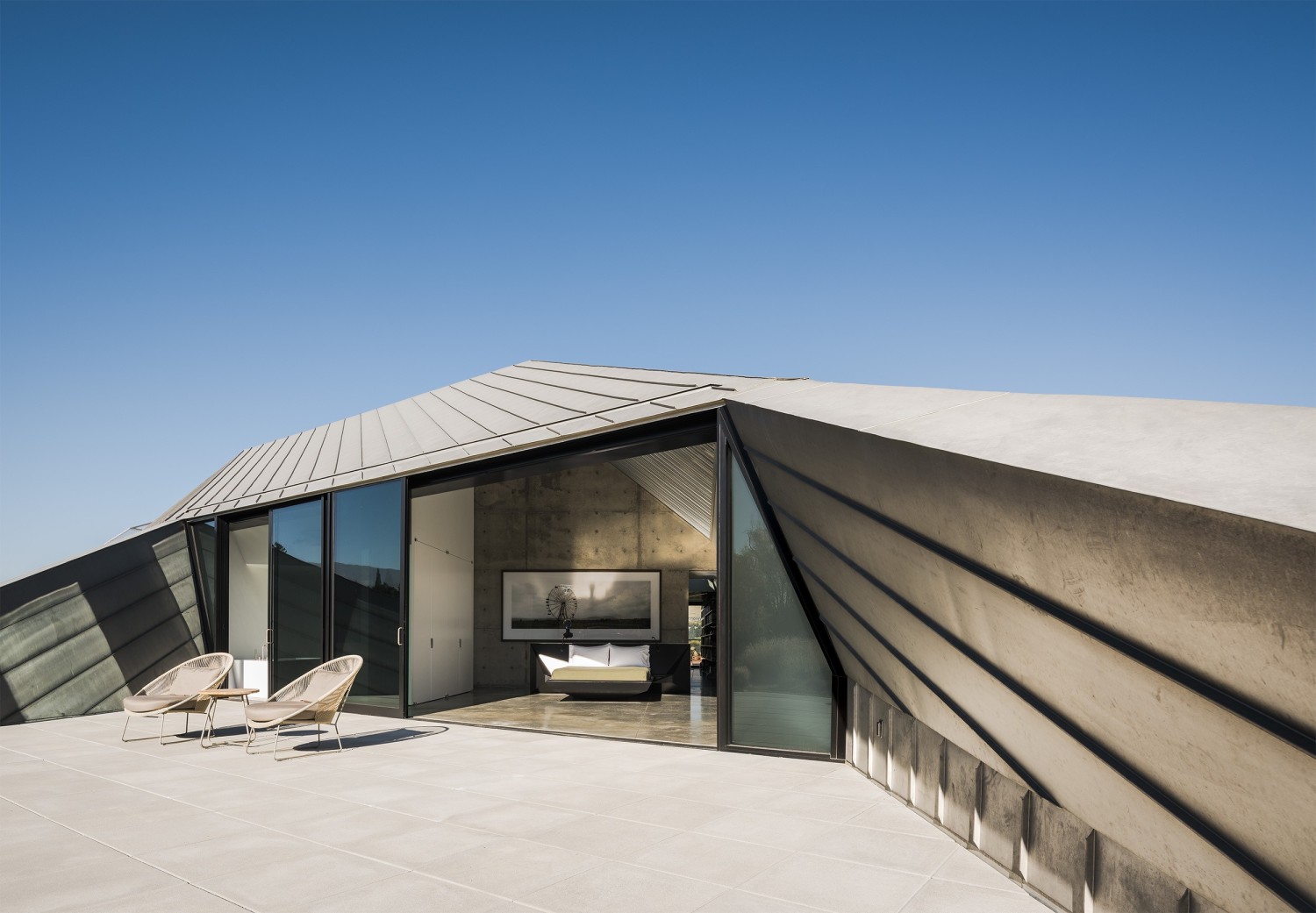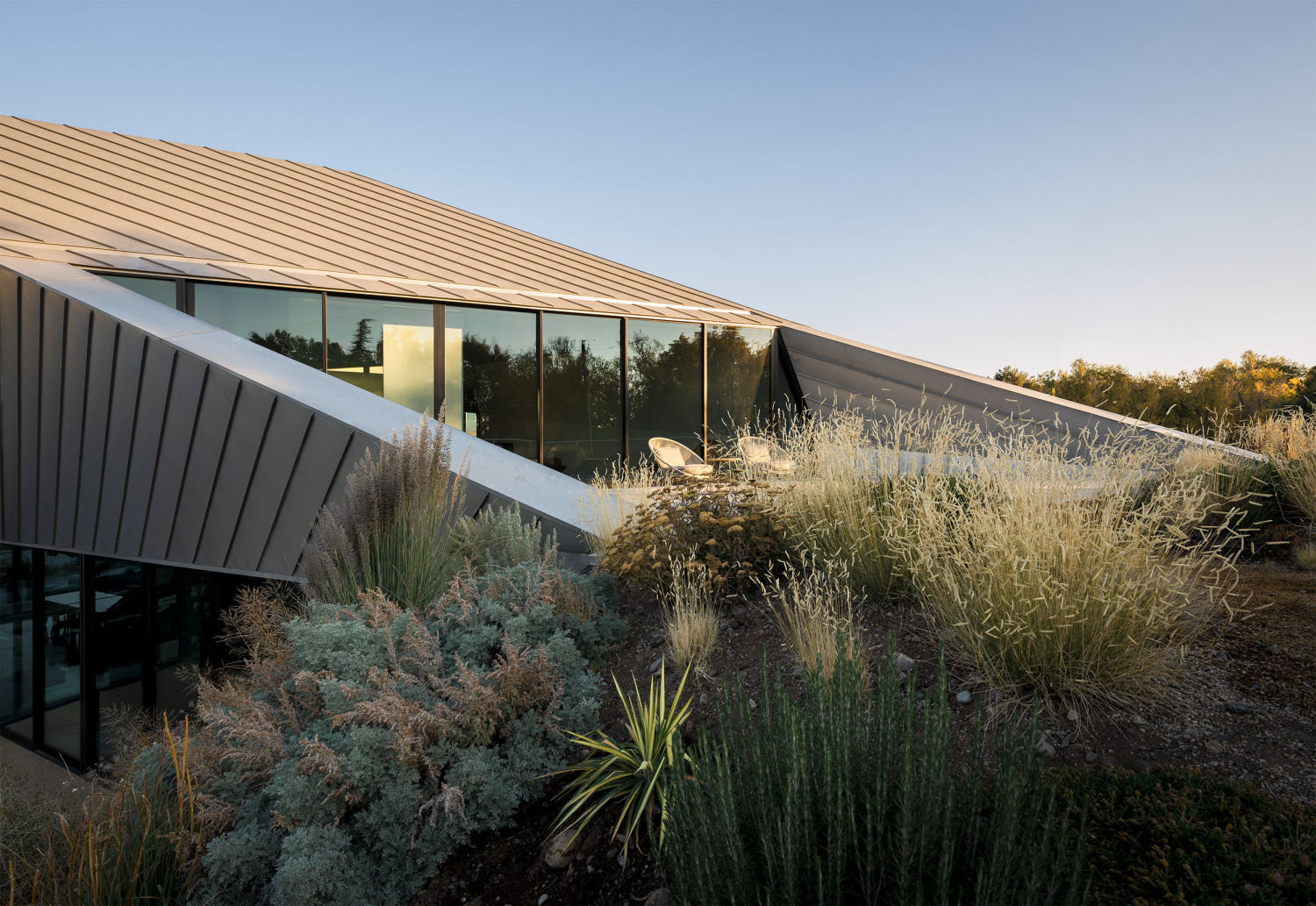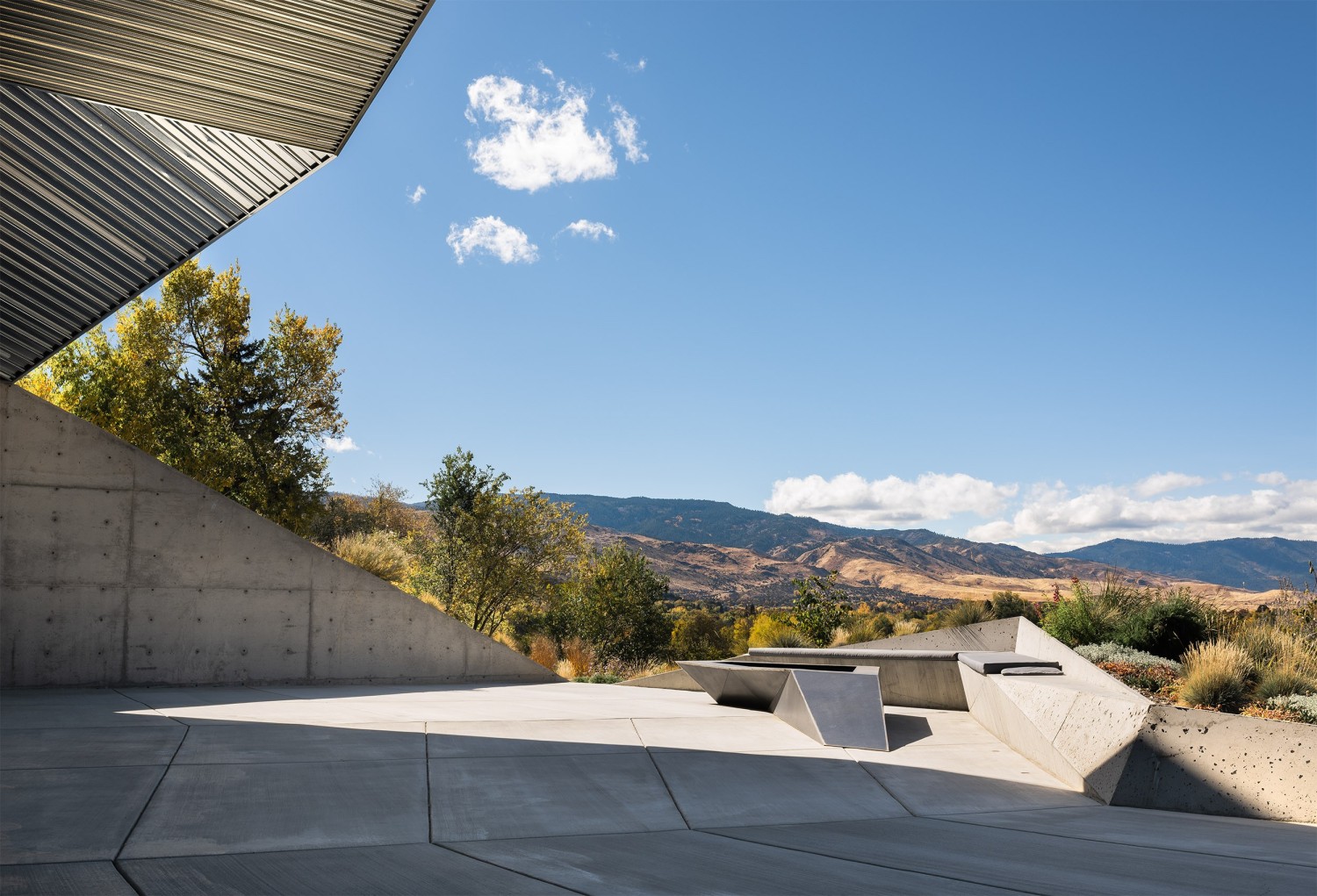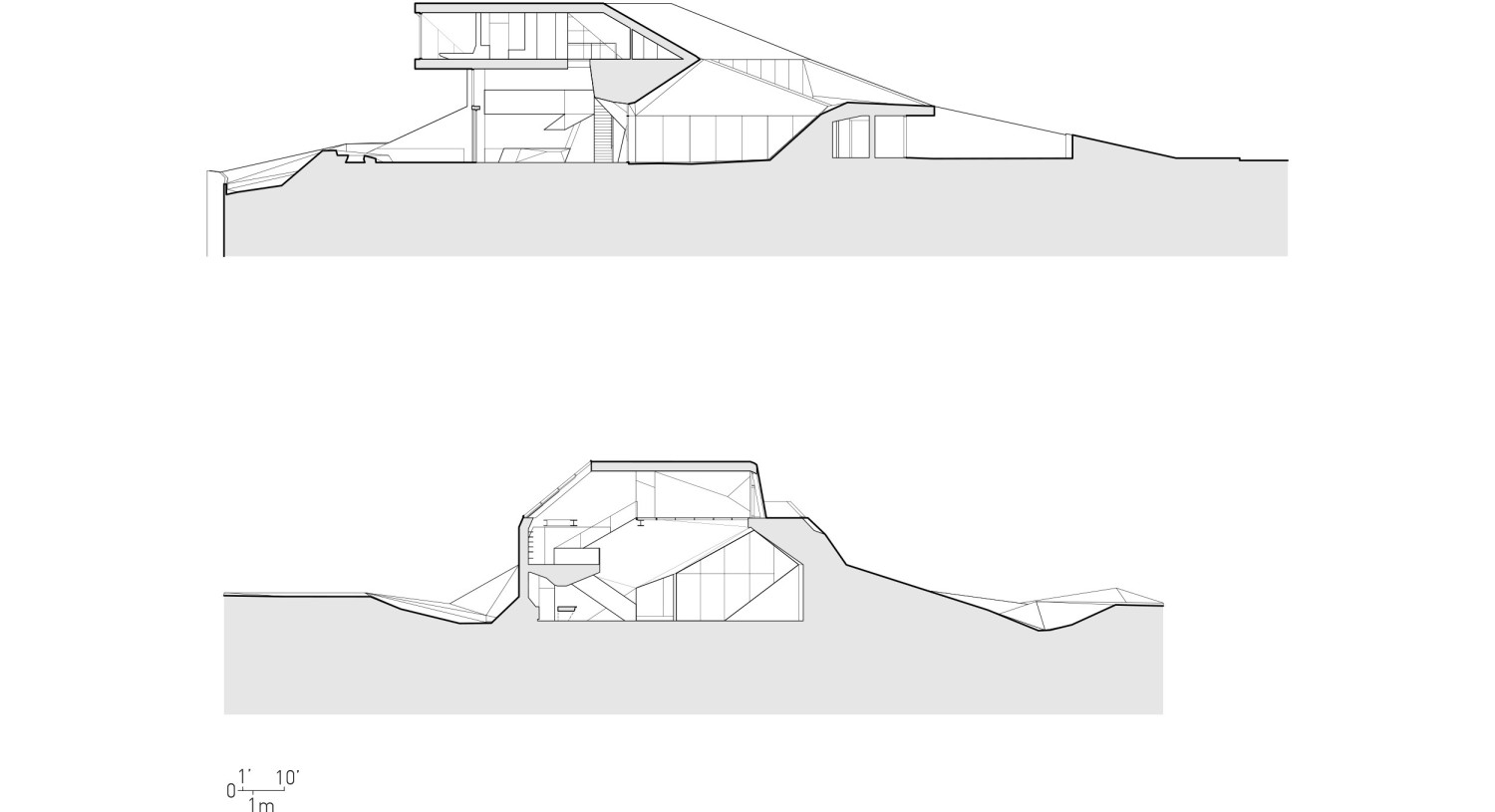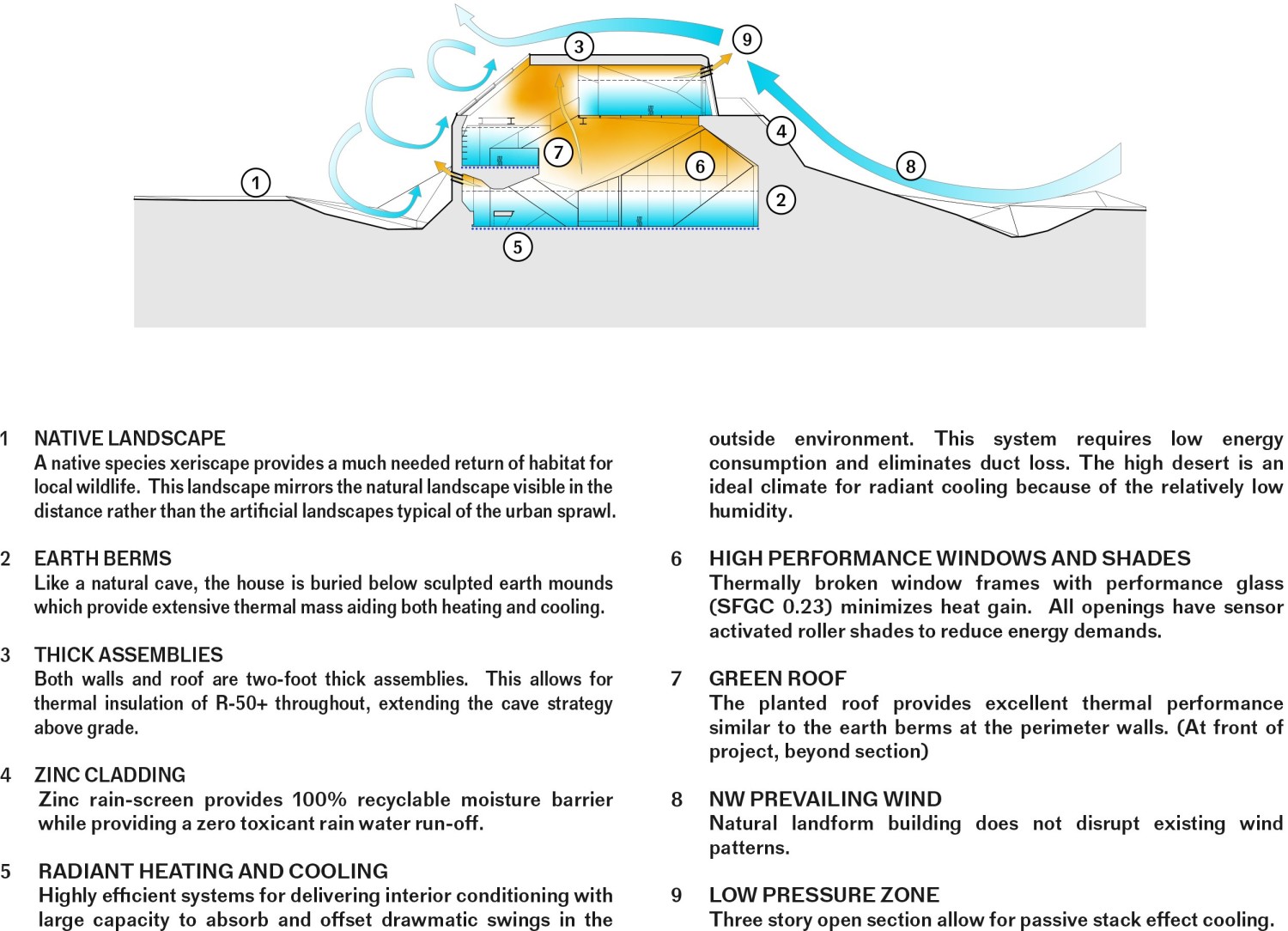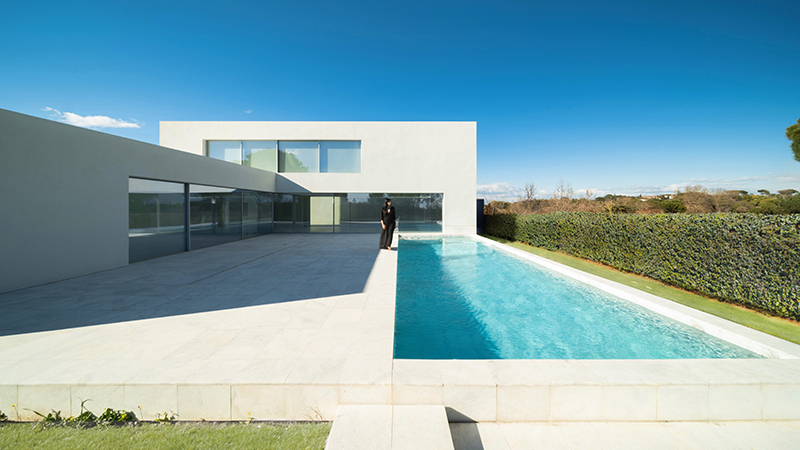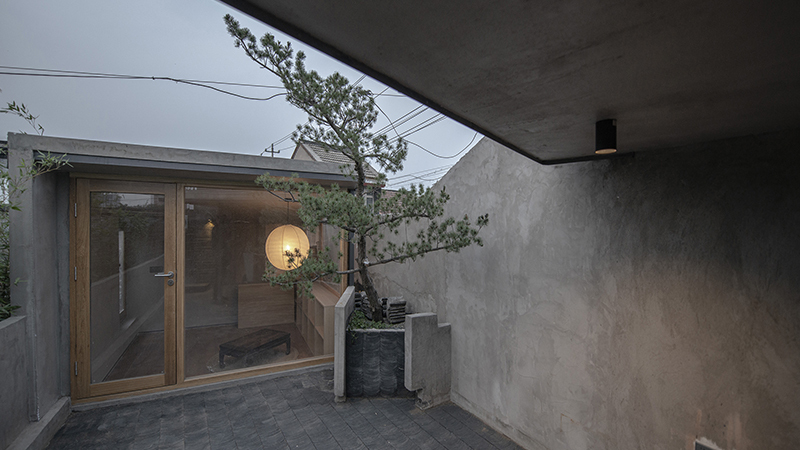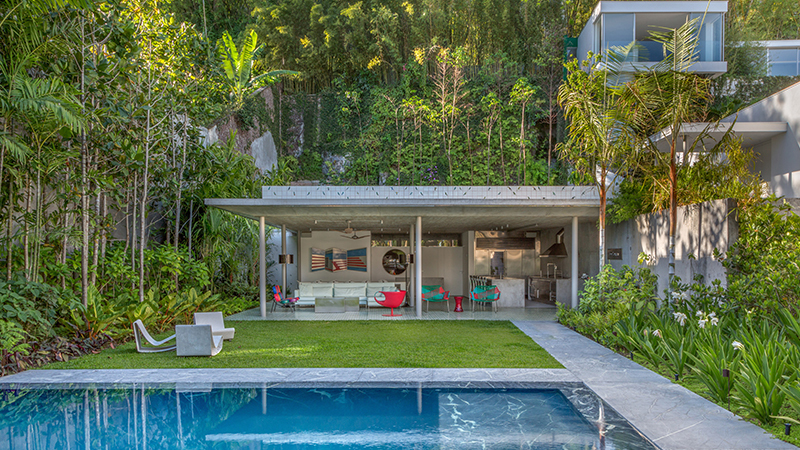两位专门从事当代艺术和美国西部艺术的艺术收藏家和经销商决定从里诺郊外干旱的荒漠地区搬到一个离城市不太偏远的地方。他们希望有一栋既能反映当代又能体现西部特色的房子。
Two art collectors and dealers specializing in contemporary art and art of the American West decided to move from the arid high desert outside of Reno to a less remote site overlooking the city. They wanted a house that would both reflect the contemporary moment and be explicit of the West.
场地是一个巨大的地块,坐落在一个已建成的社区的悬崖上,它凝视着远处的荒漠山脉,除此之外,几乎没有其他的设计灵感。当我们进入场地时,凝视着光秃秃的山脉,并决定将荒漠作为一个真实的环境,审视它在文化想象中的矛盾角色。
The new site, a large lot located on a bluff in an established neighborhood, gazes off at the desert mountains in the distance, but otherwise offered little other inspiration. We joined the site in gazing off at the bare mountains and decided to think about the desert as a real environment as well as its ambivalent role in the cultural imaginary.
美国的荒漠在历史上被理解为一个缺乏、空虚或与众不同的地方。作为一个贫瘠的荒地,一个“不毛之地”,荒漠被认为是完美的试验场,一般用于进行军事,科学,和社会实验。荒漠很少被人真正的体验到,但许多人却对荒漠有着固定的想象:荒野、边疆、荒芜。事实上,荒漠是一个持久的多变的沙盒,它改变了形式以适应使用者的想象,是一个矛盾和不确定的空间。
The American desert has a history of being understood as a place of lack, emptiness, or otherness. Framed as a barren wasteland, a kind of ‘no place’, the desert has been appointed the perfect test site, a place for all genres of experimentation – military, scientific, and social. The desert is rarely seen for itself, instead of acting as a mirror for various projected fantasies: wilderness, frontier, and heterotopia. Enduringly mercurial, it is a sandbox that changes forms to fit the imaginations of the user, a space of ambivalence and uncertainty.
在这个项目中,这片平坦、空旷的土地成为了恢复大盆地荒漠生态的试验场。既作为一个特定的环境,也作为设计的灵感,荒漠塑造了这个项目。我们认为荒漠的回归是被压抑的回归,是一块有弹性的土地,它漂浮着,汹涌着,形成了独特的景观以及空间。利用荒漠的不确定性,项目在开始时就将荒漠作为一种材料,与其他建筑材料相融合。
In our case, the flat, empty lot became a test site to reinstate the ecology of the Great Basin Desert into the generic sprawl of Reno. The desert shapes the project both as a specific environment and as an idea. We see the return of the desert as the return of the repressed, a resilient ground that drifts and surges to form both landscape and shelter. Invoking the desert as a shapeshifter par excellence, the project began by treating the ground as a fluid material that allows different forms to emerge, then flicker or dissolve into other forms.
▼项目空间概念 Concept
项目通过把沙地看作一种可变的,受保护的材料,一种未经开发的材料,不自觉的来探索这种不自然的形式。受到荒漠地形的启发,我们把场地变成了反斜面和平行面,象征着荒漠里的沙地和喷发物,于是房屋逐渐与地形融为一体。我们将原来设想的空间硬质化,形成规则的平面网状结构,这样,每个边缘都完全共享:任何一个边缘都不会在另一个边缘的中间终止。因此,在没有间断的情况下,产生了非常流动的空间。
Shapeshifter explores slippery form by seeing the ground as a mutable, protean material, an untapped unconscious. Inspired by desert topography, we reshaped the site into anticlines and synclines, dunes and blowouts, and gradually the form of the house emerged with the terrain. Then we hardened what was initially conceived of as a soft form into a regular mesh composed of planar faces. Every edge is entirely shared: no edges terminate in the middle of another edge. This results in a flow of space that supports extreme difference without discontinuities.
房子的元素通过破碎的对称性、局部轴线和嵌入的平行性的变化关系相互融合。从地形上看,房子在空间上是圆润的,是一个扭曲的环形体,有多个二级和三级空间。景观由植物、草、荒漠灌丛和野花组成。
Elements of the house slide into each other with shifting relationships of fractured symmetries, local axes, and embedded parallelisms. Topologically, the house is spatially slippery, a twisted torus with several secondary and tertiary bubbles of space. The landscape is populated by native plants – grasses, desert scrub, and wildflowers.
荒漠开始在城市中重新确立自己的地位,也许它会就此蔓延开来。在历史上,景观设计被认为比建筑更轻松,但在这种情况下,景观告诉建筑,两者是不可分割的,景观与建筑都是另一个荒漠的幻影。
The desert begins to reassert itself within the city – maybe it will spread. Historically, landscape form has been allowed to be more relaxed than architecture, but in this case, landscape informs the architecture to the point that the two are inextricable: another desert mirage.
▼项目平面图 Plan
▼项目剖面图 Section
▼项目可持续性 Sustainability
PROJECT: Shapeshifter
LOCATION: 9 Marsh Avenue, Reno, Nevada, USA
ARCHITECT: OPA
Website: oparch.net
PHOTOS: Joe Fletcher
更新日期:2020-09-04 16:45:40
非常感谢 OPA 带来的精彩项目, 查阅更多Appreciations towards OPA for sharing wonderful work on hhlloo. Click to see more works!

